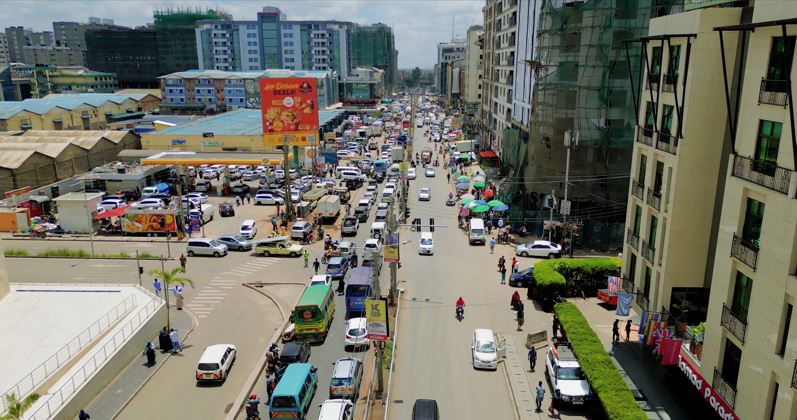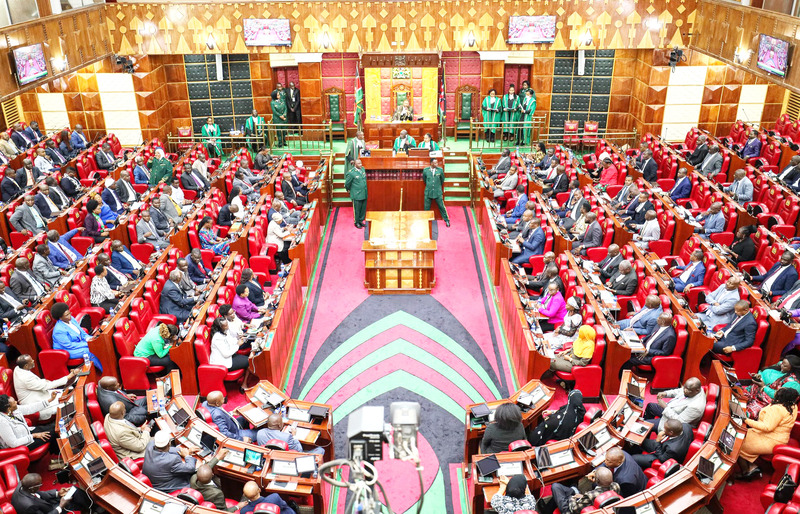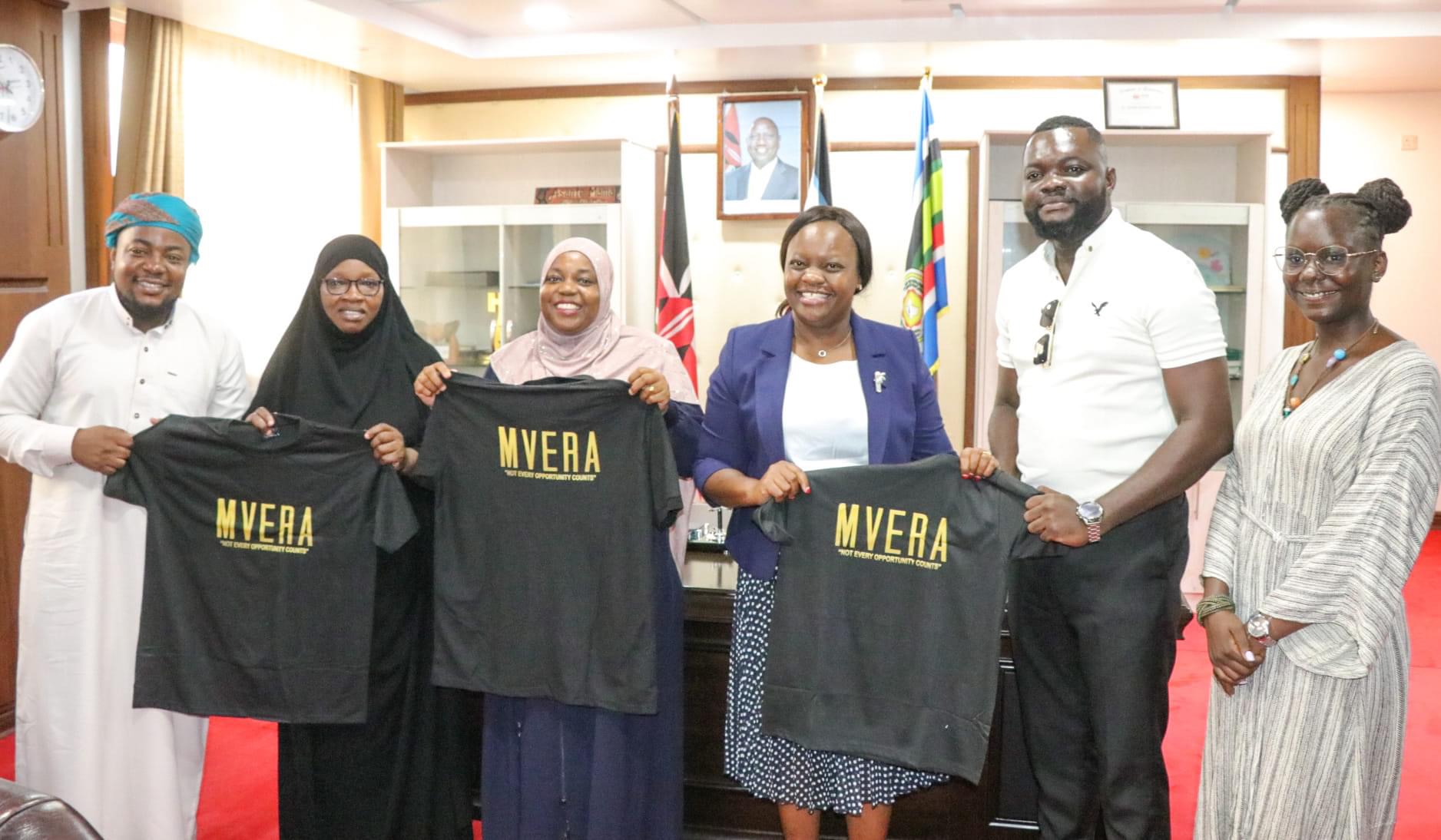Eastleigh's Growth Story: Sustainability concerns amidst real estate boom

By City Correspondent |
Over the last ten years, Eastleigh has witnessed tremendous growth in the real estate sector. What was once an old neighbourhood has transformed into a modern economy, with new apartments, hospitals, shopping malls and hotels coming up.
Over the last ten years, Eastleigh has witnessed tremendous growth in the real estate sector. What was once an old neighbourhood has transformed into a modern economy, with new apartments, hospitals, shopping malls and hotels coming up.
These new developments have made Eastleigh an attractive place to live, visit and do business. Amidst the rapid development, however, there have been concerns that the element of sustainability has been neglected.
Keep reading
Town and County Planners Association of Kenya Chairman Mairura Omwenga says while the future of Eastleigh is dependent on striking a balance between rapid development and providing a sustainable residential landscape for residents, some developments are taking place contrary to planning regulations.
“If the initial plan was such that a property on say half an acre should accommodate a maximum of four families, a developer will come and erect a development of up to 400 housing units. If on average a family has five people, the space that should accommodate about 20 people on average now will accommodate close to 2,000 people,” says Mr Omwenga.
 One of the construction sites in Eastleigh.
One of the construction sites in Eastleigh.
Similarly, if the initial plan had allocated 50 per cent of the land to green open space, you now find that virtually no open space has been left for children to play. Other problems also emerge when the water supply system is not upgraded or the wastewater disposal system not expanded to accommodate this new figure.
“Children are left playing along the corridors or in parking lots because there is no open space left. This affects their health and they are likely to develop conditions such as rickets because of weak bones. You go to hospitals and you find many people being treated for issues such as back pain or leg aches because of vitamin D deficiency,” he says.
The implication of this, he says, is that the developments are becoming less attractive to buyers because people want to live in complexes that have space for their children to play, jog or unwind.
“When people discover that some of the health issues their children are facing have to do with inadequate space to play, they start to shun the properties. We are already seeing a trend towards this direction where developments are coming up, but they are not attracting buyers as it was expected, with a number of them remaining empty for a very long time,” says Omwenga.
He says county governments and municipal authorities, through their planning departments, need to step in and play their role in making sure that planning regulations are properly enforced.
“This is a weak point that needs to be addressed. The regulations could be there but the enforcement is proving to be a challenge. This is where we also call upon our public health agencies to step in and make sure that our people are living in environments that are healthy,” he says.
The planner says the government, both at the national and county level, needs to make sure that even before buildings are constructed, they meet requirements so as not to compromise the health of residents as well as the attractiveness and sustainability of these areas. He also says developers need to look at the bigger picture and not just focus on short-term profits.
 An aerial view of the well-paved Eastleigh roads
An aerial view of the well-paved Eastleigh roads
Kenya Green Building Society chief executive Nasra Nanda says embracing sustainability can help developers attract more investments from development partners, many of whom have increased funding towards green and sustainable projects in recent times.
“We have seen development finance institutions (DFIs) like the International Finance Corporation (IFC), the African Development Bank (AfDB) and the European Investment Bank (EIB) announce increased funding for sustainable real estate development. We have also seen increased funding coming from the Green Climate Fund, Climate Investment Funds (CIF), and the Global Environment Facility (GEF),” says Ms Nanda.
Other investors that have pledged their support for green projects recently include the Dutch Entrepreneurial Development Bank FMO and Financial Sector Deepening Africa, who announced their support for the Kenya Green Bond Programme.
The programme, which will be led by the Climate Bond Initiative, Kenya Bankers Association and Nairobi Securities Exchange, seeks to facilitate more investments into the built environment, by supporting green bond issuance from financial institutions.
Some of the real estate projects in Kenya that have benefitted through green financing are The Crystal Rivers Mall, Nova Pioneer School, Garden City Mall and the Two Rivers Mall, which received funding for incorporating various environmentally-friendly features, including water recycling, green space and solar power generation in their master plans.
Figures from the Kenya Green Building Society reveal there are only about 100 certified and registered green buildings in Kenya. The figure represents a steady rise from the 25 that were recorded in 2021, but is still much lower than what has been recorded in more advanced economies such as America, where there are more than 100,000 certified and registered green buildings.
Nanda says there is also a need for a comprehensive legal framework to enable developers fully embrace sustainability in their developments. While the country has had several policies and regulations on the various aspects of sustainability, lack of a unified legal framework has resulted in inconsistent and ineffective enforcement and implementation.
David Muiruri, an urban planner and tutorial fellow at the Technical University of Kenya, says as a country, we have very nice policies in our national planning handbook but miss on implementation. He says rapid development has been allowed to continue at the expense of provision of public amenities.
“Private interests should not supersede public interest which is what planning is about,” says Mr Muiruri. Muiruri says it is offices such as the county government and National Land Commission (NLC) that hold the responsibility of making sure that green open spaces are accounted for.
With advancements in technology, Muiruri says developers can be creative in redesigning spaces where, for instance, they may allocate one or two floors in the building to an open space for recreation.
Over the last ten years, Eastleigh has witnessed tremendous growth in the real estate sector. What was once an old neighborhood has transformed into a modern economy, with new apartments, hospitals, shopping malls, and hotels coming up.
These new developments have made Eastleigh an attractive place to live, visit, and do business. Amidst the rapid development, however, there have been concerns that the element of sustainability has been neglected.
Town and County Planners Association of Kenya Chairman Mairura Omwenga says while the future of Eastleigh is dependent on striking a balance between rapid development and providing a sustainable residential landscape for residents, some developments are taking place contrary to planning regulations.
“If the initial plan was such that a property on say half an acre should accommodate a maximum of four families, a developer will come and erect a development of up to 400 housing units. If on average a family has five people, the space that should accommodate about 20 people on average now will accommodate close to 2,000 people,” says Mr. Omwenga.
Similarly, if the initial plan had allocated 50 per cent of the land to green open space, you now find that virtually no open space has been left for children to play. Other problems also emerge when the water supply system is not upgraded or the wastewater disposal system not expanded to accommodate this new figure.
“Children are left playing along the corridors or in parking lots because there is no open space left. This affects their health and they are likely to develop conditions such as rickets because of weak bones. You go to hospitals and you find many people being treated for issues such as back pain or leg aches because of vitamin D deficiency,” he says.
The implication of this, he says, is that the developments are becoming less attractive to buyers because people want to live in complexes that have space for their children to play, jog or unwind.
“When people discover that some of the health issues their children are facing have to do with inadequate space to play, they start to shun the properties. We are already seeing a trend towards this direction where developments are coming up, but they are not attracting buyers as it was expected, with a number of them remaining empty for a very long time,” says Omwenga.
He says county governments and municipal authorities, through their planning departments, need to step in and play their role in making sure that planning regulations are properly enforced.
“This is a weak point that needs to be addressed. The regulations could be there but the enforcement is proving to be a challenge. This is where we also call upon our public health agencies to step in and make sure that our people are living in environments that are healthy,” he says.
The planner says the government, both at the national and county levels, needs to make sure that even before buildings are constructed, they meet requirements so as not to compromise the health of residents as well as the attractiveness and sustainability of these areas.
He also says developers need to look at the bigger picture and not just focus on short-term profits.
Kenya Green Building Society chief executive Nasra Nanda says embracing sustainability can help developers attract more investments from development partners, many of whom have increased funding towards green and sustainable projects in recent times.
“We have seen development finance institutions (DFIs) like the International Finance Corporation (IFC), the African Development Bank (AfDB), and the European Investment Bank (EIB) announce increased funding for sustainable real estate development. We have also seen increased funding coming from the Green Climate Fund, Climate Investment Funds (CIF), and the Global Environment Facility (GEF),” says Ms. Nanda.
Other investors that have pledged their support for green projects recently include the Dutch Entrepreneurial Development Bank FMO and Financial Sector Deepening Africa, who announced their support for the Kenya Green Bond Programme.
The program, which will be led by the Climate Bond Initiative, Kenya Bankers Association, and Nairobi Securities Exchange, seeks to facilitate more investments into the built environment, by supporting green bond issuance from financial institutions.
Some of the real estate projects in Kenya that have benefited through green financing are The Crystal Rivers Mall, Nova Pioneer School, Garden City Mall, and the Two Rivers Mall, which received funding for incorporating various environmentally-friendly features, including water recycling, green space, and solar power generation in their master plans.
Figures from the Kenya Green Building Society reveal there are only about 100 certified and registered green buildings in Kenya. The figure represents a steady rise from the 25 that were recorded in 2021, but is still much lower than what has been recorded in more advanced economies such as America, where there are more than 100,000 certified and registered green buildings.
Nanda says there is also a need for a comprehensive legal framework to enable developers fully embrace sustainability in their developments. While the country has had several policies and regulations on the various aspects of sustainability, lack of a unified legal framework has resulted in inconsistent and ineffective enforcement and implementation.
David Muiruri, an urban planner and tutorial fellow at the Technical University of Kenya, says as a country, we have very nice policies in our national planning handbook but miss on implementation.
He says rapid development has been allowed to continue at the expense of the provision of public amenities. “Private interests should not supersede public interest which is what planning is about,” says Mr. Muiruri.
Muiruri says it is offices such as the county government and National Land Commission (NLC) that hold the responsibility of making sure that green open spaces are accounted for.
With advancements in technology, Muiruri says developers can be creative in redesigning spaces where, for instance, they may allocate one or two floors in the building to open space for recreation.



















